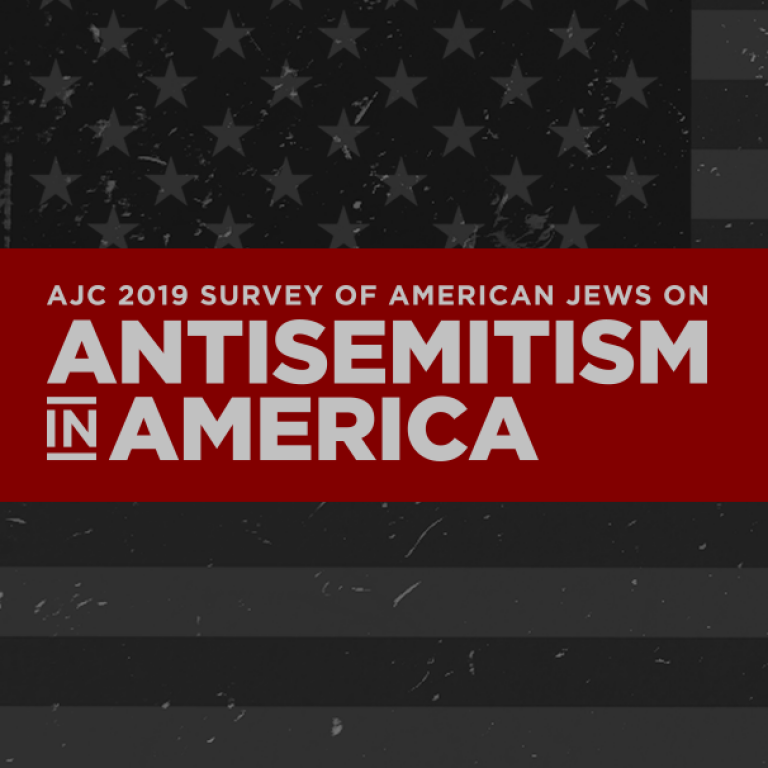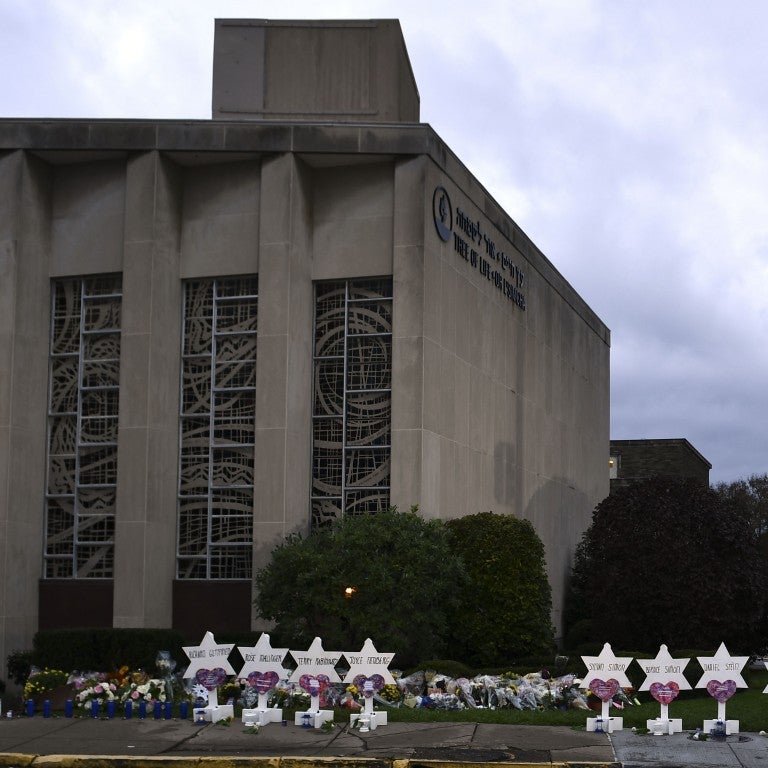October 23, 2019
Rachel Uram has never been naive about antisemitism. As President of AJC Cleveland, she has attended numerous conferences and delivered speeches about the rise of anti-Jewish hatred around the world. She has pushed for legislation such as the No Hate Act to improve hate crime reporting in the U.S. Her daily Facebook feed brims with reports of antisemitic assaults, taunts, and vandalism.
Yet, when a man on a southern California boardwalk recently spat on her and her husband, yelling “Jew!” again and again with his arm extended in a Nazi salute, she found herself shocked that she was personally experiencing it.
“It’s everywhere,” she said. “If you’re marching for something, if you’re fighting against something and you know where to find it, it’s different. When it comes around the corner at anyone? That is frightening.”
Most American Jews feel that hatred against them is on the rise, according to a comprehensive survey of American Jewish views and experiences of antisemitism released by AJC on Wednesday. More than 42% of American Jews say they are less secure than a year ago, while about 55% say they feel about as secure as they did right before the Pittsburgh synagogue attack. More than 57% say their Jewish institutions have hired security guards and 52% say police are posted outside.
But much of the most palpable and disturbing evidence of antisemitism can be found in the stories that AJC and members of its community have encountered on the ground in recent years. From verbal and physical attacks in the streets of New York and graffiti scrawled on the wall of a Los Angeles synagogue to Holocaust denial and anti-Israel lesson plans in Florida and California schools, antisemitism has surfaced in many forms and it is indeed, as Uram put it, “everywhere.”
“I wouldn’t have thought in 2019 we would be dealing with these issues,” said Michael Schmidt, regional director of AJC New York, where police say antisemitic hate crimes are up about 90% this year.
Alan Ronkin, the regional director of AJC Washington said the campaign rhetoric of the 2016 election and the 2017 Unite the Right rally in Charlottesville were turning points for American Jews.
“Everything changed in 2016, at least in this town,” Ronkin said. “Charlottesville got a lot of people’s attention. It really put people on notice, and they began to see things in their own towns.”
Ronkin said he and AJC supporters in the Washington, D.C. area see startingly parallels between the rise of antisemitism in Europe and Jew-hatred in their own neighborhoods.
“People are very concerned about antisemitism around the globe,” Ronkin said. “But it pales in comparison to when they go to the grocery store and someone calls them a kike, or their kids are harassed at school over their Jewishness.”
Schools have become breeding grounds for anti-Jewish hatred, and not all teachers and administrators have been sensitized. Laurence Milstein, regional director of AJC Palm Beach, said AJC recently helped the local school district develop a speaker series featuring Holocaust survivors, a curriculum component, and a Teacher Council on Holocaust Education. The collaboration came about after a Boca Raton principal said he would not force Holocaust education on all students because some question its historical truth.
After Pittsburgh, Ronkin said AJC’s LFT program (Leaders For Tomorrow) became a refuge for Jewish high school students who felt lonely and isolated and in need of counseling and support.
In California, a proposed statewide and mandatory ethnic studies model curriculum for high schools excluded Jews and Judaism from its discussion of ethnic groups, while promoting BDS and antisemitic tropes. After significant lobbying by Jewish groups in coalition with other communities, the California’s Governor Gavin Newsom promised a full revision.
Rabbi Serena Eisenberg, director of AJC Northern California, said that AJC is continuing to advocate for the final version to sufficiently educate students about the cultural diversity of the Jewish community, and adequately address the threat of antisemitism.
“Once finalized and adopted,” Eisenberg added, “the curriculum is expected to become a model for states across the nation.”
But the bellwether of antisemitism in the U.S. has been the Crown Heights neighborhood of Brooklyn, where numerous Orthodox Jews have been physically assaulted. One man was bashed in the face with a brick. A woman’s sheitel (wig) was snatched off her head. A synagogue window was shattered on Rosh Hashanah while worshipers were inside.
Schmidt of AJC New York said the city’s response has been swift. AJC has met with the mayor’s point person on the rash of hate crimes several times since she was appointed this summer.
“It’s not that we’re living in 1930s and the government is condoning this,” he said. “It’s not. There is a need for education, so people understand these behaviors.”
But as visibility leads to violence, the survey shows nearly a third of American Jews have avoided publicly wearing, carrying, or displaying things that might help people identify them as Jewish.
Uram and her husband were not wearing or doing anything that indicated they were Jewish. But in the heat of the moment, she found herself hiding another way. As the man yelled “Jew!” and brandished a broken bottle, she chose to act confused—as if the man yelling at her was mistaken. She was disheartened by her own response.
“I thought ‘I’ll look at him as if I am not a Jew,’” Uram said. “During this assault, I actually felt guilt—guilt for hiding my Judaism—even if it was only in my head.”
Since the attack, Uram has informed the authorities and shared her experience with others, in hopes of empowering and educating the community about the pervasiveness of anti-Jewish hatred and the importance of taking proactive steps to fight it.
“Sadly, antisemitism is right up the beach walkway and it lurks in many different forms,” Uram wrote to AJC supporters in Cleveland. “I don’t want anyone anywhere to feel the way I felt that day.”





